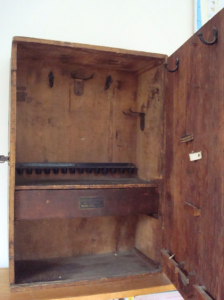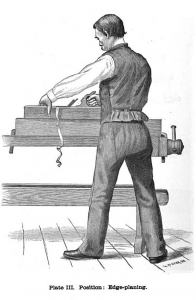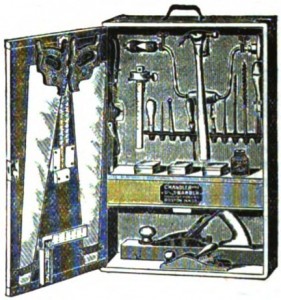We may receive a commission when you use our affiliate links. However, this does not impact our recommendations.
Bill Rainford is a young and driven craftsman in whom I think you’ll find a lot in common. Voraciously self-taught at first, Bill went on to graduate from the Preservation Carpentry Program at one of New England’s premier craft schools. He now teaches workshops at that school (North Bennet Street), serves as adjunct faculty at the Boston Architectural College, does commissioned work, develops his woodworking blog and holds down a day job in software. I want to welcome Bill to the community as an occasional guest writer. He’s going to bring us a little history and several techniques from his area of expertise, which he describes as traditional joinery – though Bill’s skills do not fit neatly in just one category.
Please welcome Bill, and enjoy this post on beginning woodworking and his traditional Sloyd tool cabinet!
–Dan
What Sloyd Did For Me and My Woodworking Apprenticeship
Part of what made my training in preservation carpentry so rewarding was the way in which it was taught. We followed a system of educational handwork derived from what was originally developed at Nääs in Sweden and known as the ‘Educational Sloyd System.’ Sloyd is the Swedish word for craft and most commonly associated with skilled manual craft work. In the late 19th century, there was a strong need in Boston and America as a whole to help new immigrants learn the skills needed to acclimate to this new country and make a living. This Sloyd System trained students by building a series of useful items, each of which introduced basic tools and skills, built confidence to tackle more advanced work and fostered the ability to self-evaluate and reach new levels of accomplishment. I go into more detail about this history in my blog article, so if you’re interested please give it a read.
Fast Forward to Today
After graduating from my training, I remained interested in Sloyd and did further research on the topic. I learned that many of the benches and hanging tool cabinets designed and produced for early Sloyd programs were based on the designs of Gustaf Larsson of The Boston Sloyd School and produced locally in Boston. Some of the benches are still in use by the school and you can find some second hand every now and then on eBay, but the hanging tool cabinet was news to me.
Shortly after learning about the Larsson tool cabinet I made a serendipitous discovery at a local pawn shop in New Hampshire – I actually found one of these cabinets and in very good shape given its age. All the hardware was intact, and only the front door was rebuilt. It was clear that this cabinet was used for a very long time by someone who cared about it, as the replacement door inherited the hardware and layout of the original.

Bill’s pawn shop discovery. Click on the image for a link to the next post in this series, including a list of the hand tools this chest contained.
I am working on a reproduction of this piece, and will be presenting parts of that project here on the Popular Woodworking community site. Future posts will include interesting details on the tools that the original cabinet would have contained, as well as notes and prices on modern equivalents.
Here are some supplies and tools we find essential in our everyday work around the shop. We may receive a commission from sales referred by our links; however, we have carefully selected these products for their usefulness and quality.










